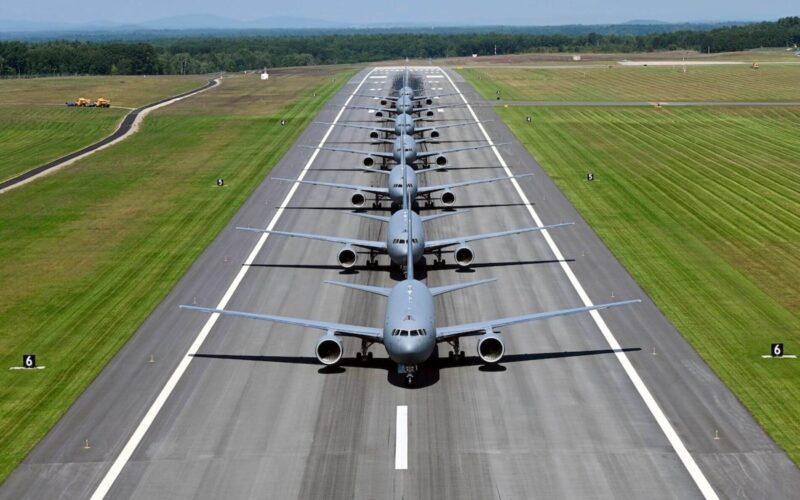The US Air Force has announced that the Boeing KC-46A Pegasus, the service’s newest aerial tanker, has been cleared for worldwide deployment following years of troubled development and acquisition.
“The KC-46 now officially joins the rest of the Air Force’s refueling fleet in meeting combatant command requirements around the world,” Ryan Samuelson, KC-46A Cross Functional Team lead of USAF Air Mobility Command, is quoted as saying in a press release.
The announcement follows the first combat refueling to be conducted by the aircraft.
According to the USAF, the KC-46 recently refueled a pair of F-15E Strike Eagle jets of 335th Expeditionary Fighter Squadron in a combat zone.
During the same mission the KC-46 also employed its advanced communications system, serving as an interface between aircraft and the Air Operations Center.
This marks just one of several milestones to be completed by the Pegasus in 2022.
After receiving approval to refuel 97% of existing aircraft operated by the US Joint Forces in July 2022, the tanker was involved in numerous exercises both in the US and abroad, ostensibly shaking-off any negativity it may have attracted.
Troubled beginnings
Introduced in 2019 the Boeing KC-46A was intended to become a new generation tanker for the USAF, featuring numerous cutting-age features.
However, it was quickly embroiled in controversy after various development and production problems became apparent. From fuel leaks and software problems to foreign objects being discovered inside its airframe, the USAF revealed that the aircraft had hundreds of critical deficiencies, many of which prevented it from becoming operational entirely.
The service stopped accepting new deliveries of the KC-46 twice in 2019, urging Boeing to fix the problems and withholding payments.
Issues with the aircraft had a significant impact on Boeing’s revenue and caused a political scandal.
At least some of the deficiencies were solved by 2022, leading the USAF to start regular operations with the aircraft.
However, as reported by Defense News, a number of problems still remain despite the USAF’s recent decision. For example, the aircraft is still unable to refuel the A-10 Thunderbolt II attack aircraft due to problems with its refueling boom. A host of software fixes, addressing problems that were discovered years ago, are also still waiting to be implemented.

